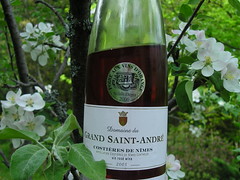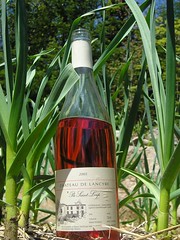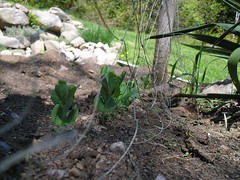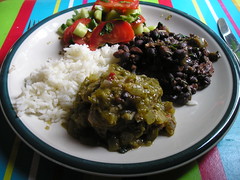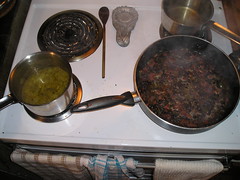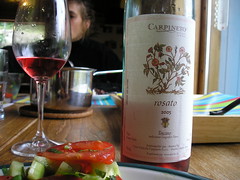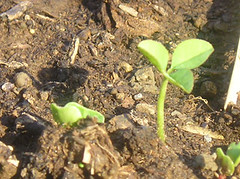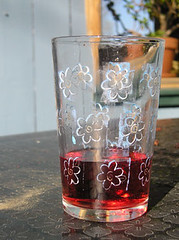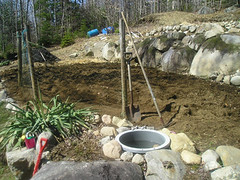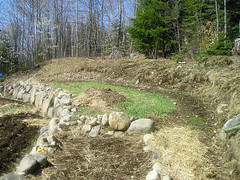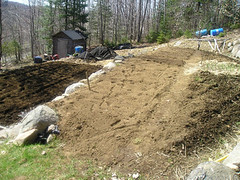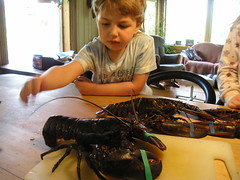 Lobster and Wine
Lobster and WineWith lobster season upon us, it’s time to break out the white wine and enjoy this most delectable of our ocean’s bounty. But what to drink? The enigma that is matching wine with food, which seems to mystify so many people, is once again on the table. But fear not, in honour of one of my favourite seasonal foods, here is the caveman’s guide to all things seabug. And remember, kids love (to play with) lobster!
The Princi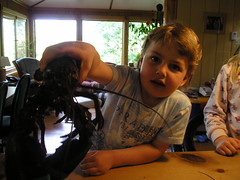 ple of the Pairing
ple of the Pairing
It might seem obvious but we are matching the wine to the food. Think of your wine as if it were a spice or accompaniment, as another element to augment the flavours and textures of your cooking. While other elements such as the time of day (lunch or dinner), outside temperature and the colour of your dinner mate's eyes can also affect your choice of wine, let’s start simple. So as we look at the lobster, the first question is how is it cooked, and then, what is it served with?
Can’t I drink red…. please?
Let’s get over this one right away. Nope. Tannin in red wine and the iodine in the lobster will react to make the ensemble taste metallic, it’s basic chemistry...sorry. On another level, the natural saltiness of the lobster (as with most seafood) will amplify the flavours of whites while turning tannic reds slightly bitter. So what about Beaujolais and other low-tannin reds? The answer is still no as the lobster’s delicate flavour will be overpowered by even the most subtle Gamay.
So how do you like your lobster?
Are you grilling, boiling or poaching the lobster in beurre blanc? Are you serving it with cream sauce? Is it part of a salad? Our rule of thumb is the richer the preparation, the bigger the wine. And in terms of wine style, the iodine in the lobster tends to match better with more ‘mineral’ and less fruit-orientated wines.
Chilled lobster in a saladBecause of the vinaigrette, you will need a wine with a higher acidity or a hint of sweetness. Remember that your wine should always have more acidity than what is on the plate or else it will taste flat. Sauvignon Blanc, Chenin Blanc and a german style Riesling are spectacular choices with the nod going to the Sauvignon if it is served with asparagus or the Riesling in a more conventional salad.
Château des Matards 2004, Premières-côtes-de-blaye
(saq..$15)Deidesheimer Leinhöhle riesling kabinett Rheinpfalz 2002 (saq..$23)Pouilly-fumé 2004, Pascal Jolivet (saq...$26)
Boiled, with and without the garlic butterThis is the classic. I tend to have the garlic butter on the table though I don’t dunk each juicy morsel. If you don’t go for the garlic butter, try a good quality Albarino, Viogner, Chablis or Pinot Blanc, wines which tend to be unoaked and have a natural richness without being too big. If you go garlic butter, try a Roussanne or white Grenache based wine (like a Côte du Rhone), Gruner Veltliner or Alsatian Pinot Gris. These grapes tend towards more vegetative notes which work well with garlic and that have enough body to stand up to the richness of the butter.
Without the garlicVinde pays d'oc 2005, Viognier, Domaine Cazal Viel
(saq..$16)Coteaux du Languedoc 2004, Château Saint-Martin de la Garrigue
(saq...$18)Albarino 2004, Pazo de Senorans
(saq...$24)Chardonnay 2004, Diamond Collection, Francis Coppola
(saq...$28) * this chardonnay is mostly un-oaked
With garlicCote du Rhone 2005, Guigal
(saq...$19)Marsanne/viognier 2003, Enigma, Terre Rouge
(saq...$30)Grüner Veltliner Kellergard Smaragd 2003, FX Pichler
(saq...$76)Are you sure I can’t drink a red?
Good wine is good wine, and good food will always be good food. When the two are in harmony then the experience is that much better. Your choice.
Lobster in cream sauceThis is where texture comes into play and our choices become a touch more limited. This degree of opulence requires a substantial wine with white Burgundy being the quintessential match. Think Meursault, Monrachet or a more budget-oriented Pouilly-Fuissé as opposed to a California-style Chardonnay. The less fruit-oriented Burgundy’s greater acidity and less oak makes for a more delicate match.
Mâcon-igé 2004, Château London
(saq...$22)Pouilly-fuissé 2004, La Maréchaude vieilles vignes, Manciat-Poncet
(saq..$27)Chassagne-montrachet Château de la Maltroye
(saq...$58)Grilled lobsterIf there is a place for oak and fruit, then it is here. The ‘charred’ and smokey flavors which result from grilling are ideal forums for the more ‘new world style’ whites which bring with them toast and smoke flavours as well as an abundance of ripe fruit. Australian, South American or Californian Chardonnays would be excellent choices.
Chardonnay 2004, Alamos Ridge Argentine
(saq..$15)Mercurey2002, Les , Château Génot-Boulanger
(saq..$31)Sicilia i.g.t. 2004, Chardonnay, Planeta
(saq..$35)
